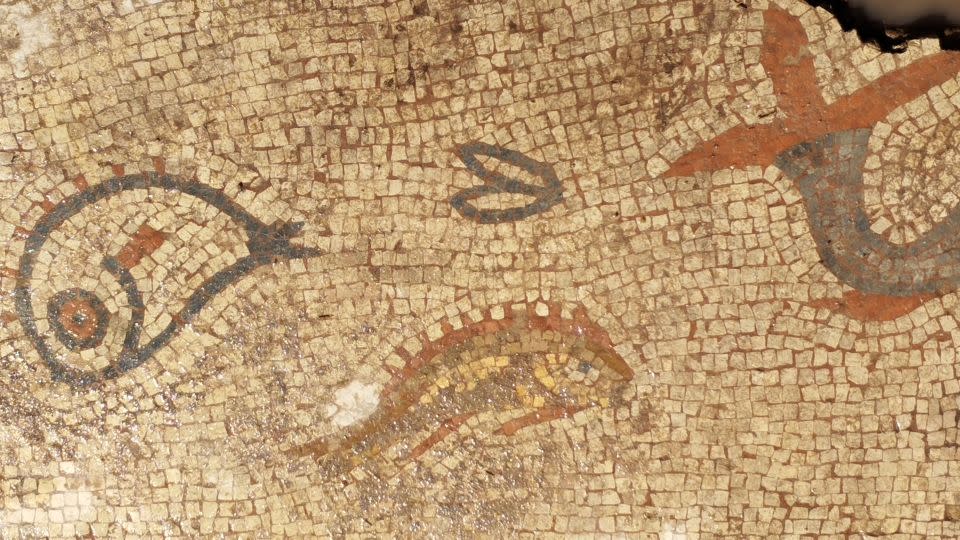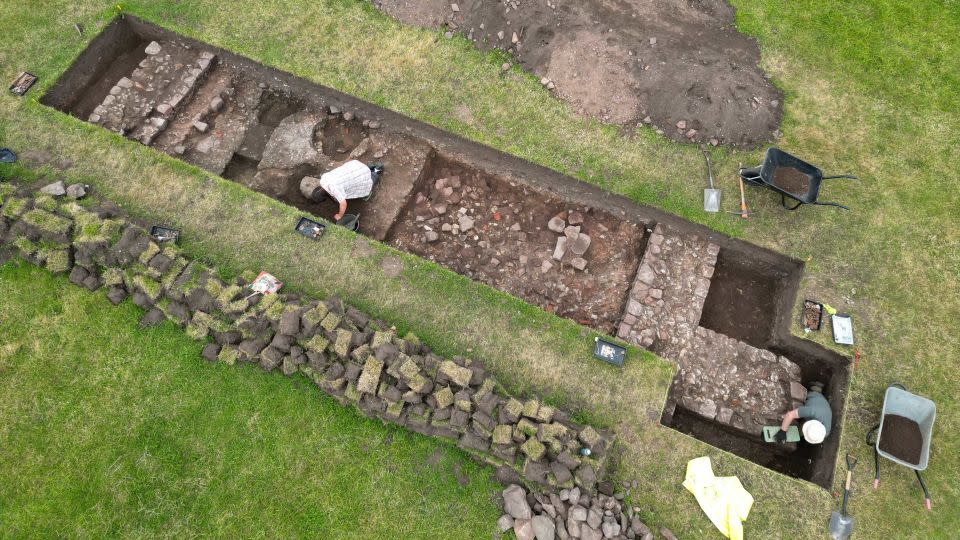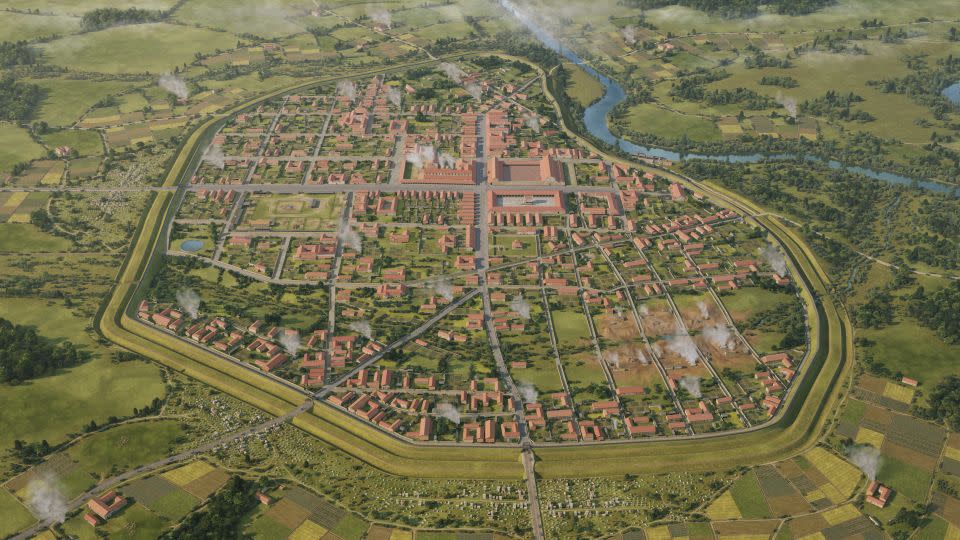A beautiful and remarkably well-preserved mosaic which had been “hidden for thousands of years” was discovered by archaeologists in northwest England.
The mosaic, which features fish and dolphins, was discovered in the Roman city of Wroxeter. The fourth largest city in Roman Britain, which was almost as large as Pompeii during its heyday, its ruins now survive as an archaeological and educational site, around 50 miles west of Birmingham.
Still displaying its brilliant colors of white, red, blue and yellow, the mosaic is the first to be discovered in Wroxeter since 1859, according to a press release from Vianova Archeology, which was involved in the excavation.
It was probably in the dining room of a wealthy person or city official accustomed to “receiving rich guests” who was “determined to impress people with this beautiful mosaic,” said Win Scutt, senior property curator at English Heritage, which manages the site. . CNN.
Scutt added that archaeologists cannot be completely sure of its function because they have only had a “glimpse” of it.
“It’s not just a self-indulgent thing,” Scutt added of the mosaic. “I think a lot of it has to do with the external display, with its position,” he said, adding that the mosaic “was meant to be seen by other people.”
A mosaic with six colors, requiring the import of stones from outside the local area, and one depicting designs like this have never been found in Wroxeter before, said Roger White, an archaeologist at the University of Birmingham.
“It’s very much in line with the taste of the time, so it’s someone who understands fashion and what to put in the mosaics, is culturally in tune,” White added.

The discovery of such a mosaic, especially one dating back to the early 2nd century, was an unexpected blessing for archaeologists. When they began excavating, they expected to uncover only finds from the 4th century, as they are prohibited from excavating remains due to the site’s historical significance, Scutt said.
“(The archaeology) will be multi-layered,” he explained. “There will be city after city because the city has lasted at least 300 years, so there are many levels and we can only get to the top level.”
The mosaic probably only survived this long because the room was filled with construction debris to elevate its interior, probably sometime in the 3rd or 4th century, which also allowed archaeologists to get to it without digging through other layers.
“Our excavations aimed to uncover the walls of this building, but we never suspected we would find a beautiful, intact mosaic that had remained hidden for thousands of years,” Scutt added in a press release from the English Heritage charity.
Huge monumental building
The excavation, conducted jointly by Vianova Archaeology, Albion Archaeology, the University of Birmingham and English Heritage, also uncovered a small square shrine or mausoleum, as well as a huge 50-metre (164 ft) long monumental building situated on one of the main streets of Wroxeter.


Until now, archaeologists have not been able to accurately date the monumental building as they have not excavated the trenches where it stands and have no clear theories to explain the presence of such a large building, although Scutt speculates that it may have been a ceremonial building. . structure initially and perhaps later became stores.
“It’s a little early to say the exact date, but it was clearly a huge building that must have dominated the city center for hundreds of years,” he adds.
These latest discoveries add to the history of Wroxeter, which researchers have established contained more than 200 houses, a civic bathhouse, a forum, a town hall and a judicial centre. It was founded in the mid-1st century as a legionary fortress before soldiers moved away and the old fortress continued to grow into a prosperous city.


Today, its position in the countryside has protected it from modern development, meaning “there is an excellent level of preservation in the middle of a Roman city that is found nowhere else in the country,” Scutt said.
“So Wroxeter was special even before the mosaic was found,” he added.
For more news and newsletters from CNN, create an account at CNN.com




































